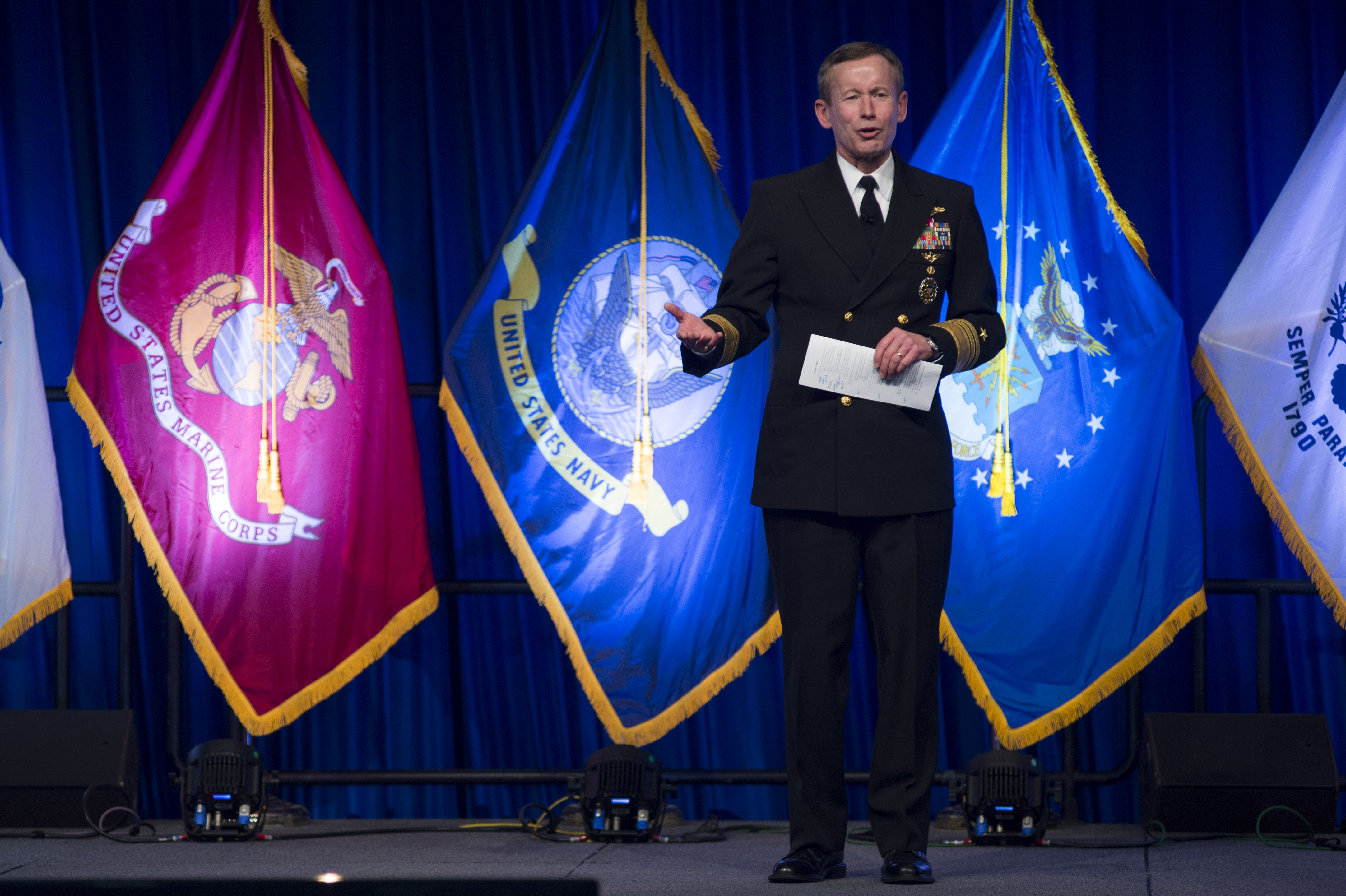
NATIONAL HARBOR, Md. — The Navy’s senior information warfare officer defined the terrain he is working in as a combination of electronic and cyber warfare with a goal for this year updating the service and joint strategies to create a set of guidance for the community that, “means something.”
Speaking Monday at the Navy League’s Sea-Air-Space 2016 Exposition, Vice Adm. Ted Branch said, “We’ve moved more into warfighting” in ways similar to undersea and space.
He said the reception in the Navy to the shift has given information warfare more recognition and more acceptance in the service. It means being seen “not just as enablers” in providing information technology but as a warfighting community.
As an example of the change in approach not only in the United States but with allies as well, the U.K. will be hosting an information warrior exercise in two years with a number of nations participating. It likely would be similar to the Rim of the Pacific international exercises the United States hosts, he said.
As information warfare matures there’s more and more overlap between electronic warfare, he said.
But another aspect of the changes occurring in information warfare and cyber is a question is at what level of authority can engage. The authority to use cyber effects is now held at a very high level. The question for the future though is: “Who’s going to do it?”
Branch said there has been a cultural change in the Navy where commanders now recognize cyber is part of their business. Inside the Navy itself there is a recognition when it come to cyber that “building a wall is not enough.” The emphasis is being put on being able to “fight through and be resilient” to “continue the fight with the systems we have available.”
Branch also has been preaching Cyber Safe, an approach that is modeled on SUBSAFE, steps the Navy took following the loss of Thresher in 1963.
Through SUBSAFE Sailors were taught the tenets of what needed to receive special handling and why things were being done certain ways. “It was there to save their life,” he said.
After his presentation, Branch part of Cyber Safe also would involve the supply chain.
We need to “know where it came from, who has touched it,” Branch told USNI News.
“All will be documented.”
That means trusting the components to ensure there are “no additives” [malware or defects] in it. “We will increasingly have to take those kinds of steps” to ensure integrity. While it can be done now to trace a component all the way through the chain from manufacturer to installation, “it’s just very expensive.”
Branch said in his presentation, “We still buy information technology … like we buy a ship.” He added, “We have to get better at that. …Right now our acquisition system isn’t set up to do” the designer approach to a situation but a builder’s approach to address a need or meet a requirement.
Internally, Branch said information warfare has changed its accessions policy and “looks more like the rest of the Navy.” It is in the process of standing up an information-type commander to do “the man, train equip function” and provide “the waterfront touch.”
He said an information warfare development center will be coming soon.





